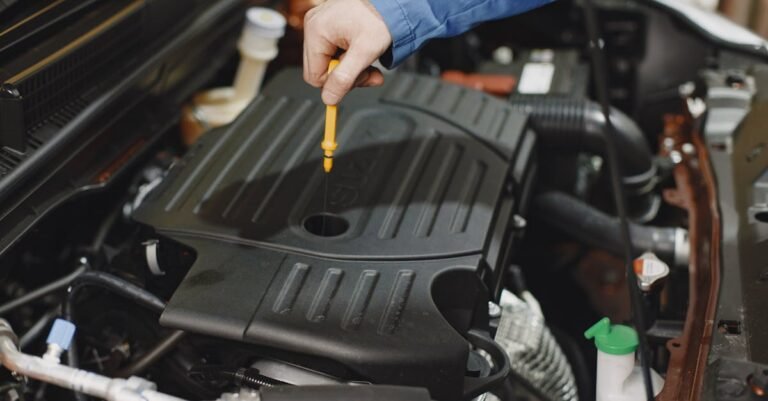Table of Contents
- Maintaining An Older Car: Top Tips
- Why Bother With an Old Car? The Undeniable Charm and Benefits
- Preventative Maintenance: Your Older Car’s Best Friend
- Fluids Are Everything: Keeping the Insides Healthy
- Decode the Signals: Listening to Your Car’s Language
- Critical Components Demanding Attention
- Fighting Father Time: Bodywork and Rust Prevention
- Drive Smart: Modifying Habits for Longevity
- Sourcing Spares: Navigating the Parts Puzzle
- Finding the Right Mechanic: Your Trusted Partner
- Conclusion: Cherishing Your Rolling Piece of History
- Frequently Asked Questions (FAQs)
- FAQ 1: How often should I really change the oil in an older car?
- FAQ 2: Are synthetic oils beneficial for high mileage engines?
- FAQ 3: What are the best places to find parts for rare or older models?
- FAQ 4: When does it become financially unwise to keep repairing an old car?
- FAQ 5: Can simple things improve my older car’s fuel economy?
Maintaining An Older Car: Top Tips
There’s just something special about an older car, isn’t there? Maybe it’s the distinct lack of a giant touchscreen, the satisfying clunk of a solid door, or the memories tied up in its miles. Whatever the reason, keeping a vintage, classic, or simply high mileage vehicle running smoothly is a rewarding, though sometimes challenging, endeavor. Forget the shiny new models rolling off the lot; you’re dedicated to your trusty steed. But let’s be real, cars, like people, need a bit more TLC as they age. Ignoring maintenance on an older car isn’t just risky; it’s practically guaranteeing a breakdown at the worst possible moment. So, how do you keep that seasoned chariot cruising happily down the road? Fear not! We’ve compiled the top tips for maintaining your older car, ensuring it stays reliable, safe, and maybe even turns a few heads.
Why Bother With an Old Car? The Undeniable Charm and Benefits
Before diving into the nuts and bolts (literally!), let’s appreciate *why* we hang onto these older vehicles. It’s not always just about saving money, although that can be a factor. There’s a deeper appeal.
Beyond Transportation: The Sentimental Connection
Often, an older car is more than just metal, plastic, and rubber. It might be the car you learned to drive in, the one that took you on countless family road trips, or a classic model you’ve dreamed of owning since you were a kid. These vehicles carry stories, memories, and a sense of character that newer cars, often designed with planned obsolescence in mind, struggle to match. They represent a different era of design and engineering, often simpler and, some might argue, more soulful. Driving an older car can feel like connecting with history, a tangible link to the past.
Wallet Watching: Potential Long Term Savings
Okay, let’s talk money. While repairs can certainly add up, owning an older car outright means no hefty monthly payments. Insurance premiums are often significantly lower, and in many places, registration fees decrease with vehicle age. If you find a reliable model known for its longevity and you’re diligent with maintenance, the total cost of ownership *can* be lower than constantly cycling through newer vehicles with their rapid depreciation. The key word here is can, and it heavily depends on the car’s condition and your commitment to upkeep.
Preventative Maintenance: Your Older Car’s Best Friend
If there’s one mantra to adopt when owning an older car, it’s this: preventative maintenance is paramount. Waiting for something to break is a recipe for disaster and usually leads to much more expensive repairs. Being proactive is the name of the game.
Start Strong: The All Important Initial Inspection
Whether you just acquired your older gem or you’ve owned it for years but are now getting serious about its care, a thorough initial inspection is crucial. Think of it as establishing a health baseline. Take it to a trusted mechanic experienced with older vehicles (more on finding one later) or, if you’re mechanically inclined, do it yourself. This isn’t just a quick once over; it involves checking:
- Fluid levels and condition (oil, coolant, brake, transmission, power steering)
- Belts and hoses for cracks, wear, and proper tension
- Brake system components (pads, rotors, lines, fluid)
- Tires (tread depth, pressure, signs of uneven wear or aging)
- Suspension and steering components (shocks, struts, ball joints, tie rods)
- Exhaust system for leaks or rust
- Battery terminals and charge
- Lights and electrical components
- Signs of leaks underneath the car
- Body condition, specifically looking for hidden rust
This deep dive helps you identify immediate concerns and prioritize future maintenance tasks.
Creating Your Custom Care Plan: Adapting the Manual
Your car’s original owner’s manual is a good starting point, but let’s face it, a car with 150,000 miles or 25 years under its belt has different needs than a brand new one. While the manual provides fundamental guidance, you’ll likely need to create a more frequent and tailored maintenance schedule. Consider factors like:
- Mileage: Higher mileage often necessitates more frequent fluid changes and checks.
- Age: Rubber components (hoses, belts, seals, tires) degrade over time, regardless of mileage.
- Driving Conditions: Stop and go city traffic, extreme temperatures, dusty environments, or towing put more strain on a vehicle.
- Vehicle History: Was it meticulously maintained or previously neglected?
Keep a dedicated logbook (digital or physical) to track all maintenance, repairs, fluid changes, and observations. This history is invaluable for troubleshooting and demonstrates good care if you ever decide to sell.
Frequency Matters: Why Older Cars Need More Check ins
Don’t rely solely on the mileage intervals suggested for a new car. Components wear out, seals dry up, and fluids can become contaminated more quickly in an older vehicle. Plan for more frequent visual inspections, perhaps monthly. Check your oil level every couple of fuel stops, glance at your tires regularly, and pop the hood periodically to look for leaks or anything obviously amiss. Think of it like checking in on an elderly relative – more frequent, gentle monitoring helps catch potential issues early.
Fluids Are Everything: Keeping the Insides Healthy
Fluids are the lifeblood of any car, but they are especially critical for older engines and components that have already seen significant wear. Neglecting fluid maintenance is asking for trouble.
Oil Changes: The Golden Rule (With Caveats)
You know oil changes are important, but for older cars, it’s not just about frequency; it’s also about using the right oil. The classic 3,000 mile rule might be excessive for some modern oils, but for older engines, especially those using conventional oil or showing signs of consumption/leaks, sticking to a shorter interval (perhaps 3,000 to 5,000 miles or every 6 months, whichever comes first) is often wise. Check your manual for the recommended viscosity (e.g., 10W-30, 5W-20), but also consider high mileage oils. These are specifically formulated with additives to help condition seals, reduce leaks, and minimize oil consumption common in older engines. Don’t forget to change the oil filter every time you change the oil!
Coolant System Care: Avoiding Heatstroke for Your Engine
Overheating is a major threat to any engine, particularly older ones which may have less efficient cooling systems or accumulated deposits. Regularly check the coolant level (only when the engine is cool!) and its condition. Coolant degrades over time, losing its anti corrosive properties and freeze/boil protection. Flush and replace the coolant according to your adapted schedule (often every 2 to 5 years, depending on the coolant type and vehicle). Inspect hoses for softness, swelling, or cracks, and check the radiator and water pump for leaks. A malfunctioning thermostat is also a common culprit in overheating issues.
Transmission, Brakes, Power Steering: The Supporting Cast
Don’t overlook the other vital fluids:
- Transmission Fluid: Crucial for smooth gear changes and preventing costly transmission damage. Check levels regularly and change the fluid and filter based on manufacturer recommendations or more frequently if towing or driving in severe conditions. The fluid should be bright red (in most automatics) and not smell burnt.
- Brake Fluid: This is hygroscopic, meaning it absorbs moisture over time. Moisture lowers the boiling point (reducing braking efficiency) and can cause internal corrosion. Flush and replace brake fluid typically every 2 years, regardless of mileage.
- Power Steering Fluid: Low or dirty fluid can lead to stiff steering or damage the pump. Check the level and condition periodically and top off or replace as needed.
Decode the Signals: Listening to Your Car’s Language
Older cars often communicate their needs through various sounds and smells. Learning to interpret these signals can save you from major breakdowns.
Sounds Suspicious? Don’t Ignore Squeals, Rattles, or Grinds
Turn down the radio occasionally and just listen. Does anything sound off?
- Squealing during braking: Often indicates worn brake pads.
- Grinding during braking: A more serious sign, potentially meaning pads are completely worn and metal is grinding on metal (damaging rotors). Address immediately!
- Rattling from underneath: Could be a loose exhaust component.
- Clicking noise when turning: Often points to a failing CV joint (on front wheel drive cars).
- Whining noise that changes with engine speed: Could be a failing alternator, power steering pump, or water pump.
- Knocking or pinging from the engine: Could indicate various issues, including using the wrong fuel octane or internal engine problems.
Any new or unusual noise warrants investigation.
That Smell Isn’t Right: Olfactory Warning Signs
Your nose can be a great diagnostic tool:
- Sweet, syrupy smell: Usually indicates a coolant leak.
- Burnt toast or electrical smell: Could be an electrical short or burning insulation. Investigate immediately due to fire risk.
- Rotten eggs (sulfur) smell: Often points to a failing catalytic converter.
- Burning oil smell: Suggests an oil leak dripping onto hot engine parts.
- Gasoline smell: Indicates a fuel leak, potentially dangerous. Find the source ASAP.
- Burnt carpet smell: Could be overheating brakes.
Critical Components Demanding Attention
Beyond fluids and general checks, certain parts naturally wear out and require diligent monitoring and timely replacement on older vehicles.
Tires: More Than Just Rubber Rings
Your tires are your only connection to the road. On an older car, pay extra attention:
- Age: Tires degrade over time, even if they have ample tread left. Check the DOT code on the sidewall for the manufacture date (week and year). Many experts recommend replacing tires older than 6 to 10 years, regardless of tread depth, as the rubber becomes brittle and prone to failure.
- Tread Depth: Use the penny test (if Lincoln’s head is fully visible, it’s time for new tires) or a tread depth gauge.
- Pressure: Check pressure monthly (when tires are cold) using a reliable gauge. Underinflation or overinflation affects handling, fuel economy, and wear. Find the correct pressure on the sticker inside the driver’s doorjamb, not on the tire sidewall itself.
- Condition: Look for cracks, bulges, cuts, or uneven wear patterns (which might indicate alignment or suspension issues).
Brakes: Your Ultimate Safety Net
There’s no room for compromise here. Have your brakes inspected regularly. This includes checking pad thickness, rotor condition (warping, scoring), brake lines (for rust or damage), and the master cylinder. Listen for squealing or grinding, feel for a spongy pedal or pulsations, and notice if the car pulls to one side when braking. As mentioned earlier, ensure the brake fluid is flushed periodically.
Belts, Hoses, and Seals: The Perils of Perished Rubber
Rubber components are particularly vulnerable to age. Belts (like the serpentine belt or timing belt, if applicable) run critical components like the alternator, water pump, and power steering. Hoses carry vital fluids like coolant and fuel. Seals and gaskets keep fluids where they belong. Inspect belts for cracks, fraying, or glazing. Check hoses for softness, swelling, leaks, or brittleness. A broken belt or burst hose can leave you stranded instantly and potentially cause severe engine damage (especially a broken timing belt). Replacing these proactively based on age and condition, rather than waiting for failure, is smart insurance.
Battery & Electrics: Powering Your Classic Ride
Car batteries typically last 3 to 5 years. In an older car, the electrical system might be less robust or have accumulated minor issues over time. Keep battery terminals clean and tight. Have the battery tested periodically, especially before winter. Check that the alternator is charging correctly (a mechanic can test this). Dimming headlights, slow engine cranking, or electrical gremlins can signal battery or alternator problems.
Fighting Father Time: Bodywork and Rust Prevention
Maintenance isn’t just mechanical; it’s also about preserving the car’s structure and appearance.
The Power of a Good Wash and Wax
Regular washing removes dirt, grime, bird droppings, and road salt – all things that can damage paint and promote rust. Don’t forget to clean the undercarriage, wheel wells, and engine bay (carefully!). Waxing provides a protective layer against the elements and UV rays, helping to preserve the paint and shine. It also makes future cleaning easier.
Rust Never Sleeps: Spotting and Stopping Corrosion
Rust is the enemy of older cars, especially in areas with harsh winters or high humidity. Inspect common rust areas regularly: wheel wells, rocker panels, door bottoms, around windows, and the frame. Address any paint chips or scratches promptly, as these expose bare metal. Treat surface rust immediately before it penetrates deeper. Undercoating can offer protection, but ensure it’s applied correctly and doesn’t trap moisture.
Drive Smart: Modifying Habits for Longevity
How you drive significantly impacts your older car’s lifespan. Avoid aggressive acceleration and hard braking. Allow the engine a moment to warm up before driving off, especially in cold weather (but avoid excessive idling). Be gentle over bumps and potholes to protect the aging suspension. Smooth, considerate driving reduces stress on the engine, transmission, brakes, and suspension components.
Sourcing Spares: Navigating the Parts Puzzle
Finding parts for older or discontinued models can sometimes feel like a treasure hunt. Thankfully, resources abound:
- Online Retailers: Many specialize in classic or specific makes/models.
- Owner’s Clubs and Forums: Connect with fellow enthusiasts who often share knowledge about parts sources or even sell parts themselves.
- Junkyards/Salvage Yards: Can be goldmines for used parts, especially body panels or trim pieces.
- Specialty Manufacturers: Some companies reproduce parts for popular older vehicles.
- Local Auto Parts Stores: Don’t rule them out; they can often order less common parts.
Know your car’s specific year, make, model, and sometimes even VIN or engine code when searching.
Finding the Right Mechanic: Your Trusted Partner
Unless you’re doing all the work yourself, finding a mechanic you trust is crucial. Look for independent shops rather than dealerships (unless it’s a classic car dealership). Ask for recommendations from local car clubs or other older car owners. Find a mechanic who:
- Is experienced with your car’s make or older vehicles in general.
- Is willing to install parts you source yourself (if needed).
- Communicates clearly about issues and repair options.
- Provides detailed estimates and explains the work performed.
Building a good relationship with a reliable mechanic is invaluable.
Conclusion: Cherishing Your Rolling Piece of History
Maintaining an older car is undoubtedly a commitment. It requires more vigilance, more frequent checks, and sometimes, more creative problem solving than owning a new vehicle. But the rewards – the driving experience, the connection to the past, the satisfaction of keeping history alive on the road, and often, the admiring glances – make it all worthwhile for many enthusiasts. By prioritizing preventative maintenance, listening to your car, addressing issues promptly, and driving with care, you can enjoy your seasoned companion for many more miles and years to come. It’s not just about transportation; it’s about preserving a piece of automotive heritage and the unique joy that comes with it.
Frequently Asked Questions (FAQs)
FAQ 1: How often should I really change the oil in an older car?
While the old 3,000 mile rule is often debated, for older cars, it’s generally safer to err on the side of caution. Consider 3,000 to 5,000 miles or every 6 months, whichever comes first. Factors like oil consumption, leaks, type of oil used (conventional vs. synthetic), and driving conditions play a role. Regularly checking the oil level and condition is key.
FAQ 2: Are synthetic oils beneficial for high mileage engines?
Yes, often they are. Full synthetic or synthetic blend high mileage oils offer better protection against breakdown at high temperatures, flow better in cold weather, and contain additives designed to condition seals and reduce leaks or oil burning common in older engines. However, if your car has always used conventional oil and has significant sludge buildup or minor leaks, switching *could* potentially clean away deposits that were inadvertently sealing leaks, making them worse. Consult your mechanic if unsure.
FAQ 3: What are the best places to find parts for rare or older models?
Start with online specialty retailers focusing on your make/model. Join owner’s clubs and online forums – the community knowledge is invaluable. Check classic car salvage yards (both local and online). Websites like eBay Motors can be useful. Sometimes, manufacturers specializing in reproduction parts exist for popular classics. Don’t discount knowledgeable local parts stores either.
FAQ 4: When does it become financially unwise to keep repairing an old car?
This is subjective and depends on your budget, the car’s value (both monetary and sentimental), and the nature of the repairs. A general guideline is when the cost of a single repair exceeds the car’s market value, or when the frequency and cost of multiple repairs become consistently overwhelming and exceed what you might pay for a more reliable vehicle. Consider safety related issues (like severe frame rust) as non negotiable – these often signal the end.
FAQ 5: Can simple things improve my older car’s fuel economy?
Absolutely! Ensure tires are properly inflated, as underinflation increases rolling resistance. Keep the engine tuned up – clean air filter, good spark plugs, and properly functioning oxygen sensors help efficiency. Avoid aggressive driving (rapid acceleration/braking). Remove unnecessary weight from the car (junk in the trunk). Address any dragging brakes or alignment issues. While an older car may never match modern MPG figures, proper maintenance makes a noticeable difference.









